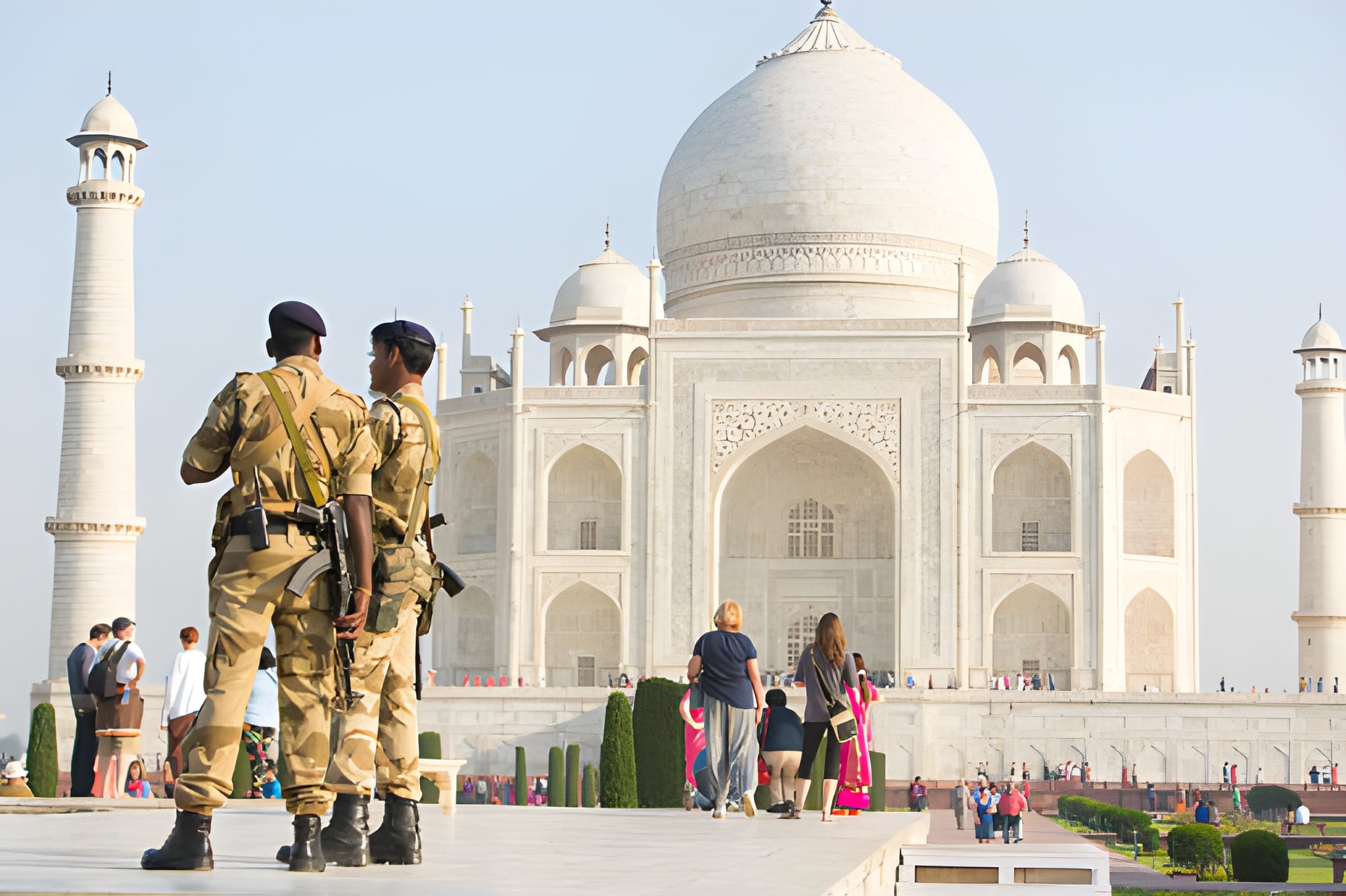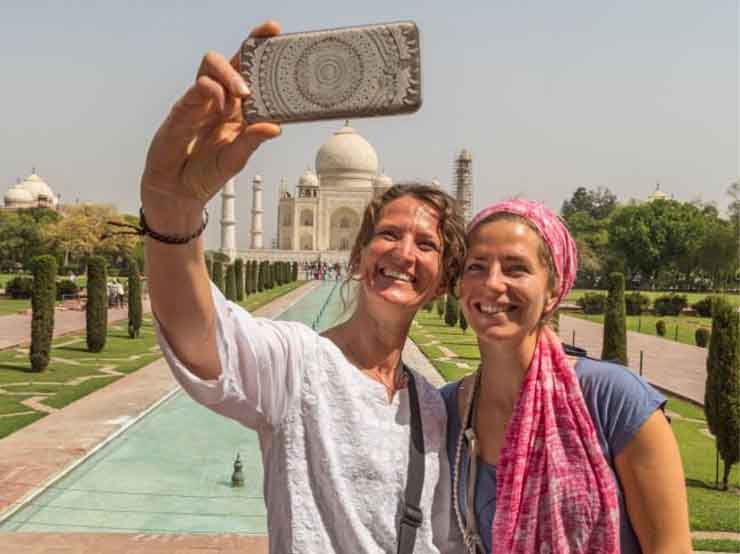The Taj Mahal, India’s crown jewel and a UNESCO World Heritage Site, continues to captivate millions with its unmatched beauty and romantic history. But beyond its marble walls lies another fascinating story — how its security has transformed from the watchful eyes of Mughal guards to today’s advanced digital systems.
Mughal-Era Protection: Human Vigilance and Loyalty
When Emperor Shah Jahan built the Taj Mahal in the 17th century, he knew its splendor needed protection. The Mughals placed armed guards at the gates and along the Yamuna River, which acted as a natural defense line. Watchtowers stood tall around the complex, and only authorized artisans, nobles, and guards could enter its inner chambers.
Security relied on loyalty, discipline, and constant human presence. Each guard served not only as a protector but also as a keeper of the emperor’s legacy — ensuring that no harm reached the monument built for his beloved Mumtaz Mahal.
Colonial and Post-Independence Eras: Changing Responsibilities
During British rule, priorities shifted. Officials focused more on managing visitors and restoring damaged parts than on strict security. Valuable stones often disappeared due to lax supervision.
After India’s independence in 1947, the Archaeological Survey of India (ASI) took direct control. It built fences, created structured entry systems, and began training personnel to manage crowds. As tourism increased, so did concerns about damage, pollution, and overcrowding. Security had to evolve to protect both visitors and the monument itself.
Modern Security: Tradition Meets Technology
Today, the Taj Mahal stands under the protection of the Central Industrial Security Force (CISF). A combination of human expertise and modern technology ensures round-the-clock safety.
-
CCTV and Surveillance: Hundreds of high-resolution cameras monitor visitor movement across the complex. Control rooms track real-time footage to detect any unusual activity.
-
Screening Systems: Visitors pass through metal detectors and baggage scanners similar to those in airports.
-
Restricted Access: Certain zones remain closed to prevent physical contact with fragile marble and intricate inlays.
-
Environmental Monitoring: Sensors measure air quality and alert authorities to any rise in pollution levels.
-
Trained Response Teams: Security officers patrol continuously and can respond instantly to emergencies.
These systems work together to protect the Taj Mahal while maintaining a calm, visitor-friendly atmosphere.
A Safer, Smoother Visit for Every Tourist
With these modern safeguards, visitors can explore the Taj Mahal with complete peace of mind. The entry process remains efficient and tourist-oriented. To skip long queues and enjoy a seamless visit, book your tickets directly on Ticketstajmahal.com.
Our platform offers secure online booking, instant confirmation, and updated information on visiting hours and entry rules — helping you focus on what truly matters: experiencing the beauty of one of the world’s greatest wonders.
Guarding the Past, Inspiring the Future
The evolution of Taj Mahal security reflects India’s dedication to balancing heritage preservation with modern progress. What began with swords and loyalty now thrives through cameras and data.
Each measure taken today protects not only marble and gemstones but also centuries of history and love. The Taj Mahal remains safe, serene, and inspiring — a monument where the legacy of the Mughals meets the innovation of the modern world.










Comment (0)